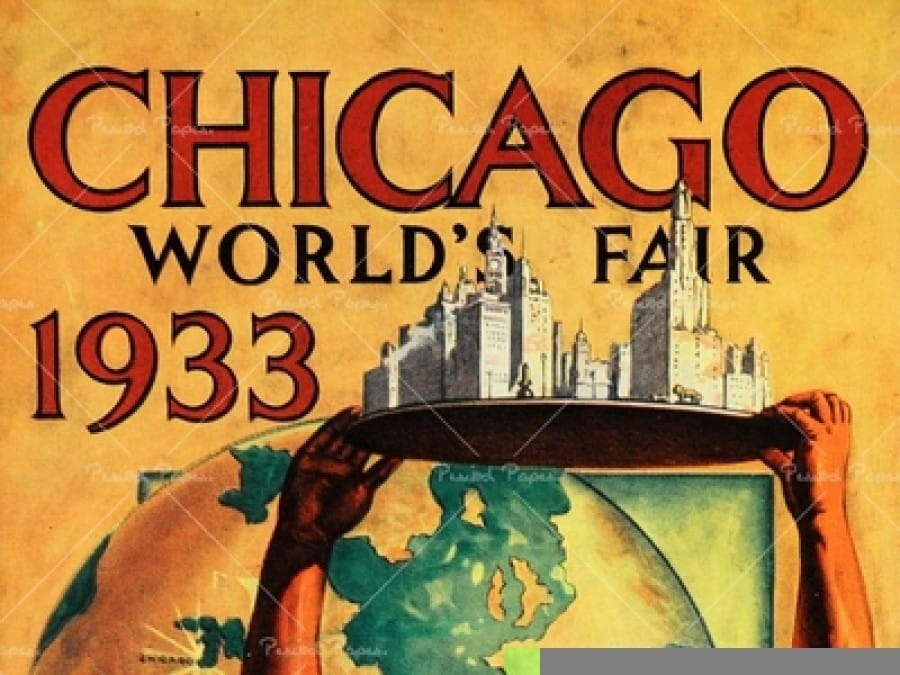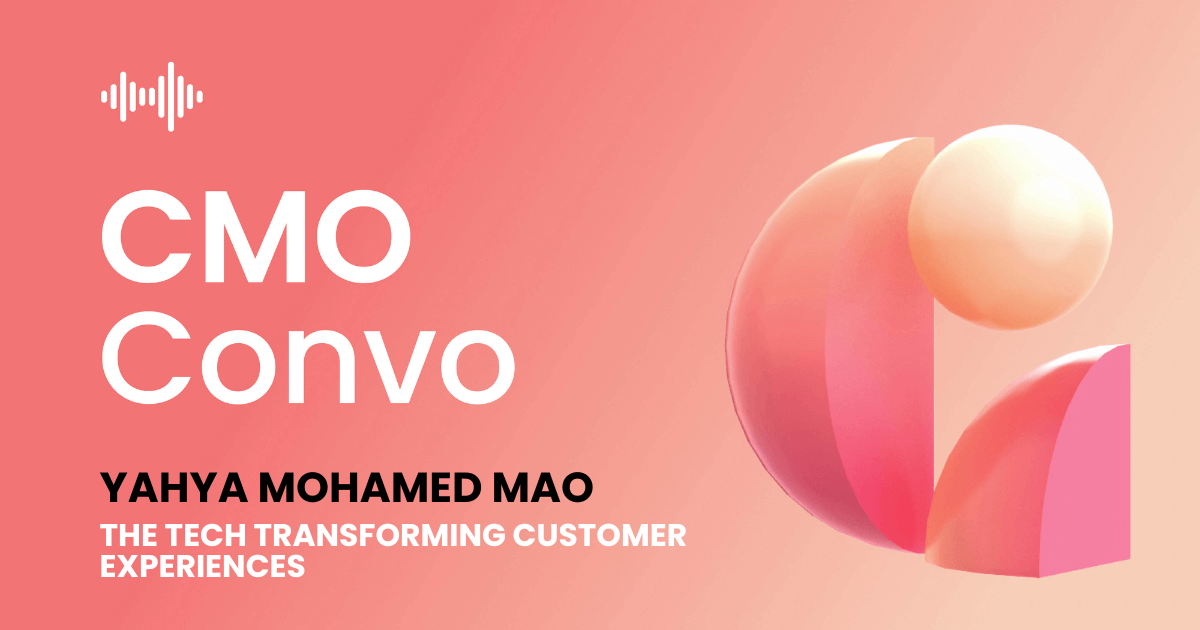This article was based on Kitty's appearance on the CMO Convo podcast.
Experiential marketing is essential for brands aiming to forge meaningful connections and memorable experiences with their audiences. It's about crafting moments that not only engage but also resonate on a deeply personal level, transcending traditional marketing approaches.
I'm Kitty Hart, Vice President of Brand Experience at Heroic Productions. With over 25 years in marketing, I've developed a deep passion for experiential marketing. This passion has grown alongside the increasing prominence of experiential strategies.
In this article, I’ll explore the nuanced benefits, audience expectations, and the pivotal role of social media in elevating experiential campaigns to new heights.
Prefer to listen? Check out Kitty's appearance on the CMO Convo podcast 👇
What is experiential marketing?
Experiential marketing, at its core, revolves around the concept of experience. It involves bringing individuals into a physical experience, often engaging as many senses as possible to create a lasting impression. Traditionally, this has meant events, experiences, and interactions that foster a deep emotional connection between a brand and its audience.
However, with the advent of digital technologies like virtual reality and digital concerts, the scope of experiential marketing is rapidly evolving. Platforms like Fortnite are now powerful tools for experiential marketing, demonstrating that experiences don't necessarily require leaving the house. They can be just as impactful when delivered in the comfort of one's home.
It's important to remember that experiential marketing isn't a new concept. Its roots trace back to the late 1800s, with early examples seen at events like the Chicago World's Fair. Brands such as Wrigley, Cracker Jack, and Aunt Jemima were pioneers, seizing the opportunity to engage directly with their target audience. They understood the power of putting their products directly into people's hands, whether in a B2B or B2C context.

Today, the future of experiential marketing is increasingly digital. This shift means that creating experiences doesn't necessarily require a physical space; they can be just as impactful, if not more so, when created in a digital environment. This evolution highlights the versatility and enduring relevance of experiential marketing in connecting brands with their audiences.
Experiential marketing in B2C vs B2B
The main benefits of experiential marketing vary between B2C and B2B contexts, and it's crucial to distinguish these differences when making a case for it. In a B2C scenario, experiential marketing often leads to a quicker sales cycle.
Examples include pop-up stores at Target or activities at state fairs, where the goal is immediate product purchases. These experiences aim to boost sales right at the moment, making a direct and tangible impact.
On the other hand, B2B experiential marketing plays a longer game. It's less about immediate sales and more about building connections and impressions. In B2B, the objective is to pique the interest of business buyers, prompting them to want to learn more about your product or service.
This approach is about opening doors to relationships, understanding that the sales cycle is naturally longer in business-to-business interactions. Senior leadership must recognize the need for patience in seeing results from B2B experiential marketing efforts.
In the crowded B2B space, especially in sectors like SaaS where new companies are constantly emerging, standing out is crucial. Experiential marketing offers a powerful way to remain top of mind with customers.
Embracing uniqueness and differentiation is key. If competitors aren't engaging in similar activities, that's an opportunity, not a drawback. It's about being authentic, aligning with your brand's identity, and seizing the chance to make a memorable impact. This approach is vital in creating lasting memories and standing out in a competitive market.
What do audiences expect from experiential marketing?
Understanding audience expectations is crucial in experiential marketing, and it certainly varies between B2B and B2C contexts, and even from brand to brand. This variance is part of why tracking the effectiveness of experiential marketing can be challenging. Each brand, campaign, and set of objectives is unique.
One key aspect I've noticed is that audience expectations are increasingly demanding. It's becoming more challenging to surprise and delight people, which is central to experiential marketing. Creativity is paramount in crafting these campaigns.
Today, people often prefer experiences over tangible items. This preference is evident in trends like holiday gift-giving, where experiences are becoming more sought after than physical gifts.
To entice people to participate in an event, particularly post-COVID, the experience needs to offer something valuable, like education or a unique story they can share. People enjoy trying new things first and sharing their discoveries with others, positioning themselves as knowledgeable or ahead of the curve. This sharing aspect is a powerful motivator.
From a practical standpoint, people are often attracted to events where they can gain something, whether it's a tangible item, a special offer, or a unique experience. For instance, offering a VIP experience or a discount can be an effective lure.
Ultimately, the goal is to provide an experience that is different and memorable, something attendees will want to share with others. This drive for unique experiences is what makes experiential marketing so effective and essential in differentiating a brand in today's competitive landscape.

Leveraging social media in experiential marketing
Experiential marketing is incredibly potent for generating user-generated content, creating a significant social footprint that extends far beyond a brand's direct followers.
When attendees share their experiences on platforms like TikTok and Instagram, it not only amplifies the event's reach but also provides authentic content that resonates with wider audiences. This aspect of social sharing is crucial and should not be overlooked.
Integrating a social media strategy into experiential marketing is essential. If a brand fails to consider the social media element of an event, it's missing out on a substantial opportunity. This strategy involves promoting the event on social platforms beforehand, encouraging live sharing during the event, and engaging with the audience post-event. Utilizing a specific event hashtag is a key tactic for monitoring and engaging with the online conversation.
Monitoring social media activity is vital. It allows the marketing team to track engagement, participate in conversations, and gauge the event's impact. While social media metrics like impressions, likes, comments, and shares may not directly translate to sales, they are valuable indicators of brand engagement and reach. They help in understanding the event's impact and the audience's perception, contributing significantly to measuring the success of an experiential marketing campaign.
Addressing misconceptions about the cost of experiential marketing
There's a common misconception that experiential marketing is prohibitively expensive, often seen as a strategy reserved only for big brands. However, this perception needs to be challenged. Experiential marketing is not inherently about high expenses; it's more about creativity and strategic planning.
Smaller brands can certainly execute successful experiential events by scaling their budgets appropriately. It's a matter of smart, creative planning rather than massive financial investment.
A notable example that highlights this principle involves a well-known brand, Uber, but the concept applies broadly. In the early days of Uber, they organized a unique VIP dining experience in New York.
They created a branded Uber vehicle, inviting top-tier users (those who used Uber frequently) to a special event. Inside the vehicle, a celebrity chef prepared a meal while they traveled around New York. This event was intimate, involving only about 12 people, but the impact was immense, especially in terms of social media impressions.
This example illustrates that experiential events don't need to be large-scale to be effective. Even small, intimate events can have a significant impact, especially when they include elements that encourage social sharing.
Key to success is having the right people who can generate buzz and amplify the event's reach through social media. Therefore, experiential marketing should be seen as a viable strategy for brands of all sizes, focusing on creativity and strategic planning rather than just a hefty budget.
Challenges in measuring ROI and setting goals in experiential marketing
The challenge of demonstrating ROI in experiential marketing primarily stems from the unique nature of each campaign. Unlike more traditional marketing strategies, there are no standardized methods to measure ROI in experiential marketing.
This uniqueness necessitates that each team must define their own success metrics tailored to the specifics of their campaign. It’s important to establish what will be meaningful for the team and the business, as it will vary greatly from one organization to another.
Utilizing surveys and monitoring social channels to assess impressions and audience engagement are effective ways to gather intel. These methods provide insights into how the audience interacts with the brand and the impact of the experience. It’s crucial to understand that experiential marketing is often about building long-term relationships rather than expecting immediate sales responses.
Regarding goal-setting, it should start with identifying the challenge or objective the campaign aims to address, such as launching a new product or boosting sagging sales. The next step is brainstorming potential approaches and ideas that align with the challenge. Once a few ideas emerge, it’s time to consider the actions they might drive and the experiences they could create.
Goals should then be established based on these ideas, ensuring they are directly linked to addressing the initial challenge. This approach ensures that the experiential activity is not only creative and engaging but also strategically aligned with the brand's broader objectives and challenges.

Involving key stakeholders in experiential marketing planning
In the planning stages of experiential marketing, it’s crucial to involve a range of stakeholders beyond just the marketing department. Sales teams play a vital role and should have a voice in these discussions. Their insights are invaluable because they interact with customers daily, understanding their pain points and preferences. This collaboration is a prime example of the importance of alignment between sales and marketing teams.
In today's market, the way people buy has evolved, so the strategies for selling need to adapt accordingly. When sales and marketing align, they can more effectively generate revenue from these events.
Executive leadership, particularly the CFO, should also be included in these discussions. Their involvement ensures that everyone understands the campaign's objectives and expected outcomes. This integration can transform the CFO from a potential skeptic into an advocate for the marketing department.
Additionally, sales teams can contribute significantly to shaping the experiential marketing strategy. They can provide insights into customer behavior, preferences, and the types of experiences likely to resonate most effectively. This input is not just about maximizing sales but also about creating experiences that genuinely connect with the audience, whether in a B2B or B2C context.
Involving these stakeholders in the planning process ensures that the experiential marketing campaign is well-rounded, strategically aligned, and capable of addressing the specific needs and challenges of the business and its customers. This collaborative approach is essential in both B2B and B2C settings, as it leverages diverse perspectives to create more impactful and relevant marketing experiences.
Experiential marketing in B2B: Conferences, trade shows, and corporate events
In the B2B world, experiential marketing often takes the form of conferences, trade shows, and corporate events. These types of events are quintessential examples of B2B experiential marketing. It's a common misconception that anything labeled "corporate" must be dull or uninspiring.
However, this couldn't be further from the truth. Corporate events, trade shows, and conferences can and should be exciting, surprising, and delightful. They offer unique opportunities to present a company's products and services in a way that's engaging and memorable.
Trade shows, in particular, sometimes suffer from negative perceptions. Despite this, they remain a highly effective platform for showcasing a company and initiating relationships with new business buyers. While it's true that trade shows can be costly, involving booth setup and other expenses, the potential benefits they offer in terms of direct engagement with potential clients and partners are significant.
These B2B events serve as a platform for companies to stand out and connect with their audience in a meaningful way. They are not just about selling products or services but about starting and nurturing business relationships. The experiential aspect of these events is key to making them successful.
By creating an engaging, interactive, and memorable environment, companies can effectively convey their brand's message and values, making a lasting impression on potential clients and partners.

Engaging attendees with memorable experiences
When attending trade shows, many people, including myself, typically follow a pattern: prioritize booths with specific offerings of interest, then visit those with attractive giveaways like swag, and finally, explore booths that offer unique and interesting experiences.
Once the primary objectives of the event are achieved, the focus shifts to how to stay entertained. This is where the aspect of fun and engaging experiences at trade shows becomes crucial. Whether it's through innovative technologies like VR, enjoyable amenities like good coffee and music, or other creative elements, these experiences are key in keeping attendees engaged and interested.
Shifting focus to corporate events, they represent another crucial facet of experiential marketing. Big brands with widespread locations and large employee bases find great value in bringing people together. These events might be focused on honoring top salespeople, launching a new service or product, or providing educational opportunities. However, it’s vital to ensure these events are far from mundane.
Incorporating elements that transform these gatherings into something impactful and memorable is essential. It could involve creating an immersive environment, featuring top-notch speakers, or providing entertainment that elevates the event from a simple meeting to an unforgettable experience.
The goal is to design an environment that leaves employees and attendees feeling excited about the company and its offerings. It’s about creating a sense of enthusiasm and pride, whether they’re being recognized for achievements or introduced to new products and services.
Well-executed corporate events can invigorate employees and attendees, making them eager to share their experiences and reinforcing their connection to the company. This approach is key to making trade shows and corporate events not just informative but also genuinely engaging and memorable.
The value of internal branding and corporate events
Internal branding and corporate events play a significant role in experiential marketing that is often overlooked. These events are not just about training or information sharing but about creating an engaging, fun experience for employees.
Knowing that there's something enjoyable at the end of a training day can keep employees engaged and motivated throughout. Moreover, these events encourage social sharing on platforms like LinkedIn, which not only spreads the word about the company but also helps attract talent.
Investing in corporate events demonstrates a commitment to the team. It reminds me of a popular saying often shared on LinkedIn, highlighting a conversation between a CFO and a CEO. The CFO asks, "What happens if we invest in developing our people, and then they leave us?" To which the CEO replies, "What happens if we don't, and they stay?"
This conversation encapsulates the importance of investing in employees. Corporate events are an investment in the team and have a significant ROI in terms of employee satisfaction and loyalty.
In today's hybrid and remote working environment, these events might be the only time employees get to meet their colleagues face-to-face. Making these gatherings memorable and enjoyable fosters a stronger emotional connection with the company, transforming obligatory events into something employees look forward to.
Additionally, the shift to hybrid events post-pandemic has expanded the reach of these corporate experiences. By adding a virtual component, those unable to attend in person can still participate, broadening the audience and inclusivity.
Involving customers in these events, perhaps by inviting them to view certain fun or team-building activities, is another excellent strategy. It helps customers feel valued and gives them an inside look into the company culture, further strengthening their connection to the brand. This approach adds an extra dimension to corporate events, enhancing their impact both internally and externally.
Tracking ROI in experiential marketing
Tracking the ROI of experiential marketing events is a critical aspect that needs careful consideration. Surveys are a fundamental tool in this process. Crafting surveys with thoughtfully designed questions is essential to gather the necessary information.
The method of distribution can vary, from physical surveys at the event to digital ones sent out post-event. However, encouraging participation can be challenging, so offering incentives for completing surveys can be effective.
Another key element is social media engagement. Incorporating social media into experiential events is not only about enhancing the experience but also serves as a valuable metric for gauging audience engagement and reach. Tracking posts, shares, likes, and hashtag usage can provide insights into the event's impact.
For trade shows and corporate events, monitoring attendance is straightforward yet crucial. Tracking the number of attendees, their engagement levels, and gathering contact information for follow-up can demonstrate the event's effectiveness. This data helps in understanding the success of pre-event promotions and the actual engagement during the event.
Looking towards the future, technologies like facial recognition are becoming more prevalent in experiential marketing. Such technologies can provide detailed analytics, like determining the demographics of attendees, gauging their emotional responses, and measuring engagement duration. For instance, the Mall of America has been using facial recognition in their mapping systems, illustrating the growing trend of integrating advanced technologies into experiential marketing.
These methods, from traditional surveys to cutting-edge tech, are part of a broader strategy to build and measure the effectiveness of relationships between a brand and its audience. They offer valuable insights that go beyond mere numbers, helping to understand the deeper impact of the experiential marketing efforts. As these technologies evolve, they'll offer even more nuanced ways to track ROI, making experiential marketing an even more compelling strategy for brands.
Digital engagement and tracking in experiential marketing
Incorporating digital tools and strategies to track engagement and manage customer relationships is essential in modern experiential marketing. The use of apps in events is an increasingly popular approach.
While creating an app comes with a cost, it can be an effective way to engage participants and collect valuable data. These apps often include elements of gamification, which have proven to be very appealing. They not only enhance the experience but also gather useful information about customer preferences and behaviors.
However, there's a balance to be struck regarding data collection and privacy. It's important for brands to be transparent about their data tracking practices and respect individual privacy preferences. While some people, like myself, don't mind sharing data for a more personalized experience, others may be more privacy-conscious. This consideration is crucial in designing experiential marketing strategies that are both effective and respectful of individual preferences.
QR codes have emerged as a simple yet powerful tool in experiential marketing, especially post-pandemic. Their resurgence has shown how effective they can be in driving engagement. They're easy to use, can be linked to various digital experiences or information, and are a cost-effective way to track engagement.
QR codes can lead users on a journey, connecting them to the brand in a way that's both interactive and measurable. They exemplify how creativity, rather than a large budget, can drive successful engagement in experiential marketing.
Overall, the key is to find creative, cost-effective ways to engage participants while gathering useful data to guide future marketing strategies. Whether through sophisticated apps or simple QR codes, the goal is to present products or services to those who need them most effectively and engagingly.

Golden rules for experiential marketing and ROI
The golden rule in experiential marketing is to clearly understand the challenge or problem you're looking to solve. It's essential not to approach marketing as a random exercise of trial and error, but rather as a strategic process driven by clear objectives.
Start by asking key questions: Why are you organizing this event? Who is it for? What outcome do you desire? These questions should guide the creative process and ensure that the event is purposeful and targeted.
It's also important to think about the human element. Would the concept resonate with you as an individual? While you might not be the target audience, empathizing as a human being can provide valuable insights.
We're naturally drawn to experiences that evoke emotions and feelings. This intrinsic desire for meaningful experiences should be at the heart of any experiential marketing strategy.
When it comes to ROI, it's crucial to establish how success will be measured, understanding that this will vary with each campaign and brand. All stakeholders should agree on the units of measure for success. This consensus ensures everyone is on the same page and has the same expectations.
It's not just about the numbers; it's about understanding the impact of the experience on the audience and how that translates into business value. Good experiential marketing should create a memorable impact that resonates with the audience, fosters brand loyalty, and ultimately drives business goals. Keeping these principles in mind can help create effective and impactful experiential marketing campaigns.
Got some ideas for experiential marketing you want some advice on? Maybe you need help securing alignment from stakeholders on something. The CMO Alliance Community Slack channel is a global network of marketing leaders ready to share their insights.




 Follow us on LinkedIn
Follow us on LinkedIn




